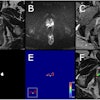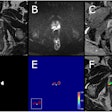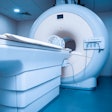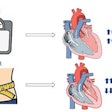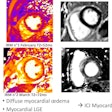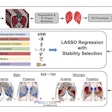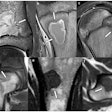An accident at Turku University Central Hospital in Turku, Finland, involving a floor-cleaning machine being sucked into an MRI machine has underscored the need for clear safety protocols for all staff, and specifically the dangers that may be posed in the use of cleaning equipment such as floor scrubbers.
The incident occurred when a facilities employee entered the MRI room with a heavy-duty floor scrubber, which was sucked into the MRI bore, the Helsinki-based Iltalehti news site reported.
"Luckily, no injuries were reported. It was human error and it happened before any patients were in the room," Mikko Pietilä, director of hospital services for the Southwest Finland Welfare Region, told Iltalehti.
However, the MRI scanner was damaged due to the incident; Pietilä said that the hospital is awaiting estimates for the repair of the machine and negotiating with its insurance company on the repair costs.
Pietilä added that the floor scrubber was also damaged; the replacement cost of the scrubber is negligible, he said, noting that MRI scanners cost “a seven-figure sum.”
According to reports, while the employee had followed instructions in leaving all other metal objects outside the room, he did not realize that the floor scrubber could not be used in the MRI suite due to the type of metal in it.
While Pietilä told Iltalehti that there had been previous small occurrences involving metal brought into the MRI suite, he did not recall any serious incidents at the facility before this one.
However, serious incidents involving cleaning equipment such as floor buffers, along with other metal items, still occur worldwide.
“These magnetic attraction accidents continue to occur…and each one represents an unreasonable risk of injury to the people in the MRI room at the time,” Tobias Gilk, MRI safety expert and AuntMinnie contributor said.
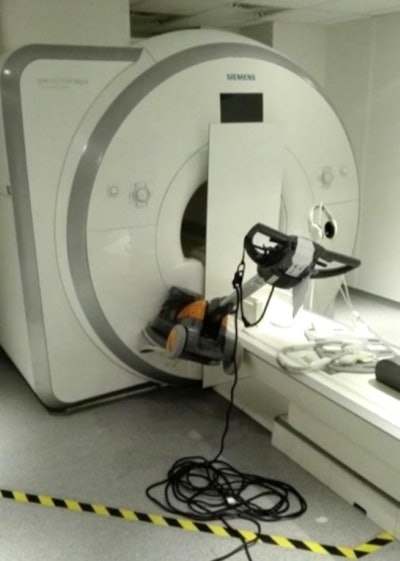 A floor polisher stuck to an MRI from an earlier incident; image from Dr. Tobias Gilk's collection.Image courtesy Dr. Tobias Gilk
A floor polisher stuck to an MRI from an earlier incident; image from Dr. Tobias Gilk's collection.Image courtesy Dr. Tobias Gilk
Gilk recounted numerous earlier incidents with cleaning equipment such as floor buffers and polishers, as well as accidents with healthcare equipment such as wheelchairs, intensive care unit (ICU) beds, and vents. All of these incidents have put staff and patients in jeopardy, and in some cases have caused serious injuries or fatalities.
Gilk stresses that he believes these accidents could be avoided. At the 2012 RSNA meeting, he and Dr. Emanuel Kanal presented findings from a retrospective to determine if MRI injury accidents from the U.S. Food and Drug Administration (FDA) Manufacturer and User Facility Device Experience (MAUDE) database could have been prevented by three existing recommendations for preventing projectile accidents from the 2007 ACR Guidance Document for Safe MR Practices.
“The results suggested enormous preventative potential,” Gilk wrote.
At the time of their presentation, Gilk and Kanal voiced their concern that there were scant MRI safety regulations. That lack of regulation has persisted, according to Gilk.
“Almost 13 years later, that absence of industry oversight for this issue hasn’t materially changed. None of the U.S. states really regulate MRI safety at the point of care.”
The damaged scanner at Turku remains out of service at present.



